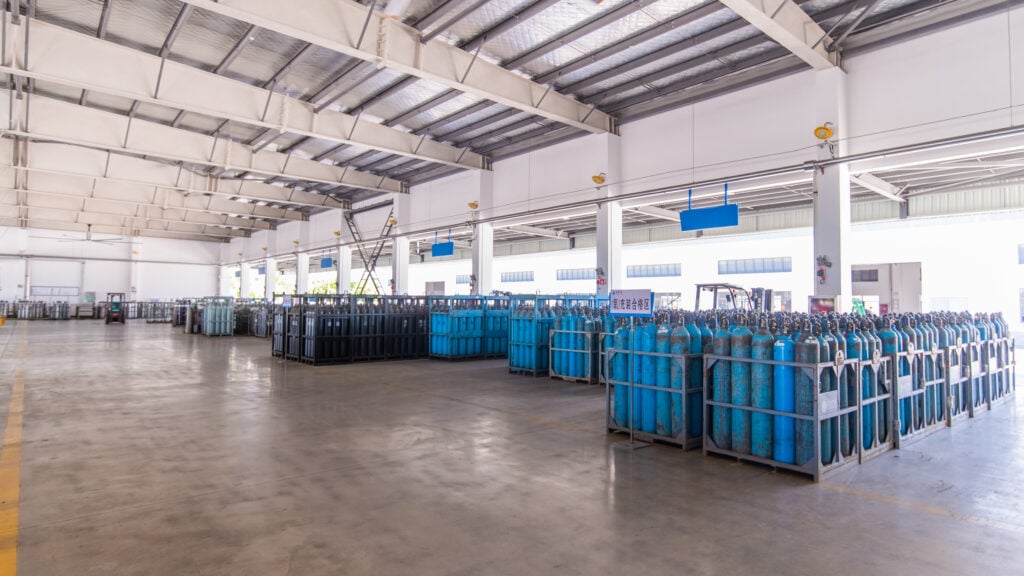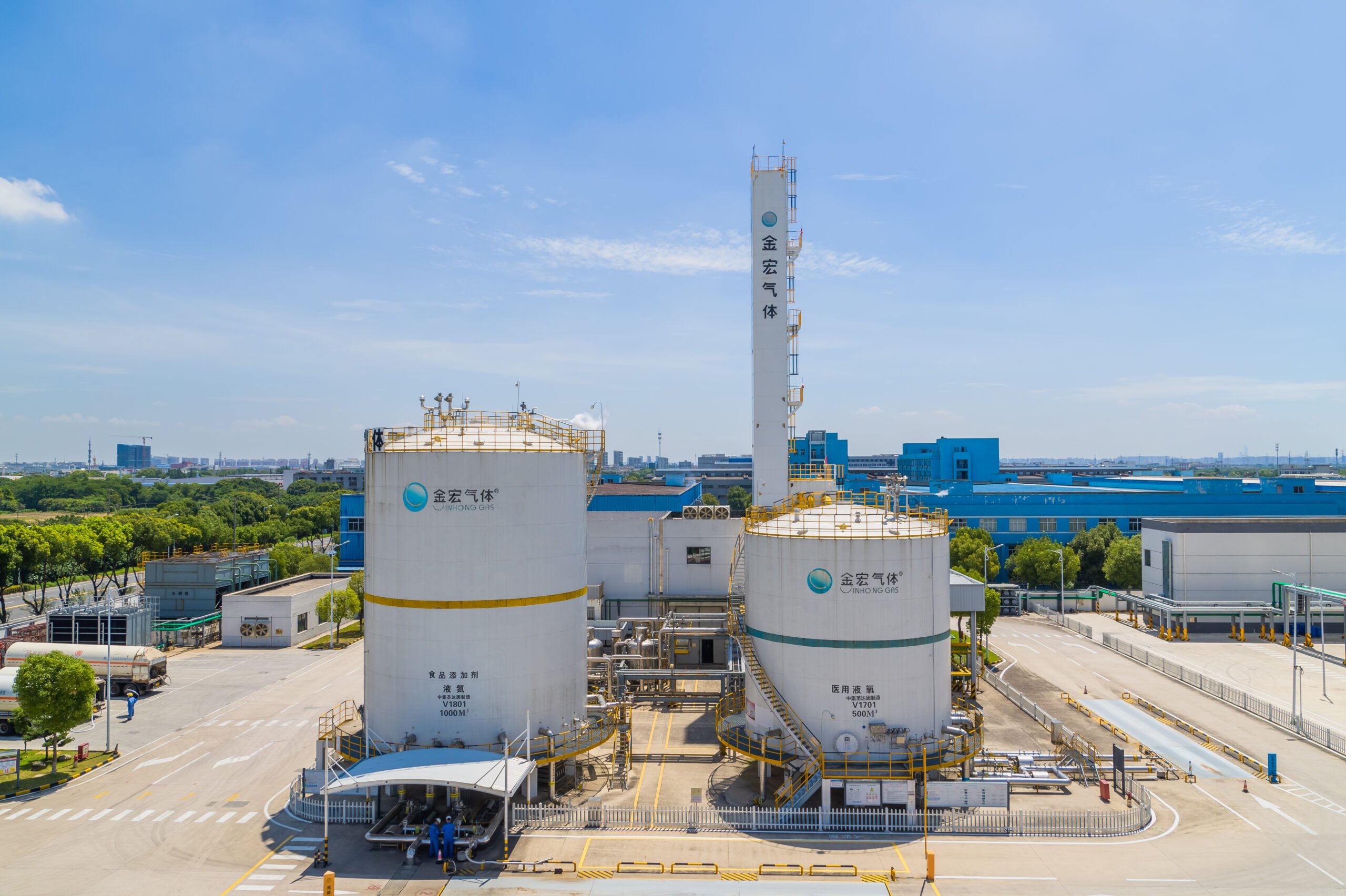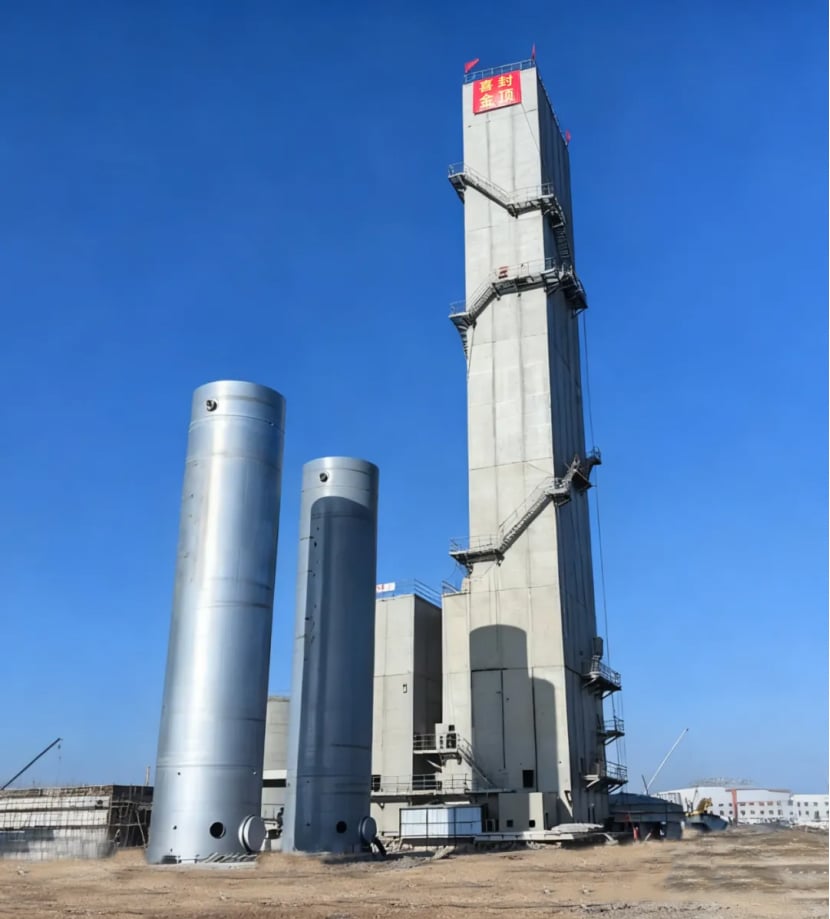From industrial production lines and emergency medical rooms to research laboratories and even everyday kitchens, gas cylinders play the indispensable role of “gas carriers.” Whether it’s life-saving medical oxygen, shielding gases for welding, liquefied petroleum gas (LPG) for cooking, or breathing air for deep diving and inert gases used in optical fiber manufacturing, their safe storage and transport rely heavily on cylinders. Among the many types available, welded cylinders and seamless cylinders are undoubtedly the two most widely used categories. While they serve similar functions, they differ significantly in terms of manufacturing process, structural performance, application scenarios, and cost. Choosing the right cylinder is not only crucial for efficiency and cost control but directly relates to safety.

I. Essential Differences: Manufacturing Determines the “DNA”
Welded Cylinders
- Raw Materials: Steel plates (commonly carbon steel) or aluminum plates. The thickness is usually determined based on the design pressure.
- Core Process: Plates are cut and rolled into a cylindrical body (longitudinal seam welding), with hemispherical or elliptical end caps (heads) welded onto both ends (circumferential seam welding). Welding is the critical step, commonly using automated submerged arc welding or gas shielded welding.
- Defining Feature: Clearly visible weld seams (longitudinal and/or circumferential), which is where the term “welded” originates.
- Process Complexity: Relatively low, with clear steps, making it well-suited for large-scale automated production.
- Nature: Comparable to “tailoring and stitching” with fabric.
Seamless Cylinders
- Raw Materials: High-quality alloy steel billets (such as 30CrMo, 34CrMo4, 4130X) or thick-walled seamless steel tubes.
- Core Process: Steel billets are heated and pierced under immense pressure, then formed into a cylindrical shape (including shoulder and bottom) using hot spinning or a combination of cold drawing and spinning. There are no welding or joints involved. Valve seats and other parts are often formed integrally by spinning or machining.
- Defining Feature: No weld seams on the cylinder body. The surface is smooth and continuous, forming a single solid unit.
- Process Complexity: Very high, requiring significant equipment investment, high technical expertise, and precise process control.
- Nature: Similar to sculpting from a solid piece of metal.
Comparison Table: Key Manufacturing Differences
(Omitted here; include if visuals are required.)
II. Performance & Structural Comparison: Strengths and Weaknesses at a Glance
Strength & Pressure Resistance
- Seamless cylinders come out on top. The absence of welds eliminates the weak zones associated with heat-affected areas. With uniform material distribution, they can withstand higher internal pressures (common working pressures include 15MPa, 20MPa, 30MPa, or higher). This is why they dominate in high-pressure gas applications such as hydrogen, high-pressure oxygen/nitrogen, and helium.
- Welded cylinders are limited by welds. Weld seams are potential weak spots, typically weaker than the base material. This restricts the maximum working pressure (commonly for medium to low pressure applications—LPG cylinders typically work at 2–3MPa; some industrial welded cylinders can reach 10–15MPa, but still below seamless cylinders of the same size).
Gas Tightness & Safety
- Seamless cylinders offer significant advantages. No weld seams mean the main sources of leakage or rupture are eliminated. The integrated structure ensures extremely low gas leakage rates, especially under high pressure, offering a greater safety margin. Ideal for flammable, explosive, toxic, asphyxiating, or high-purity gases.
- Welded cylinders rely heavily on weld quality. Their gas tightness and safety are highly dependent on the welding quality, including the process and non-destructive testing (NDT) results. Potential defects like lack of fusion, slag inclusion, porosity, or cracking may exist. Under cyclic pressure use, fatigue cracks are more likely to form at weld areas, increasing leakage or rupture risk. They are also more sensitive to material purity and corrosive environments.
Weight & Portability
- Seamless cylinders are lighter (relative to strength). Thanks to advanced processes and high-strength alloy steel, seamless cylinders can achieve thinner walls and lighter weight at the same volume and pressure rating. This makes them highly popular in applications requiring frequent movement or manual handling (e.g., respirators, diving equipment, portable gear).
- Welded cylinders are relatively heavier. To ensure strength—especially around weld areas—thicker plates are often needed. Material utilization may also be less efficient compared to seamless spinning processes, resulting in heavier weight under the same volume and pressure.
Fatigue Life & Durability
- Seamless cylinders typically last longer. The integral structure without welds provides better fatigue resistance, making them more durable under repeated filling and pressure cycling, with a longer expected service life.
- Welded cylinders need careful monitoring of weld fatigue. The heat-affected zone in welds is the bottleneck for fatigue life, so weld condition must be regularly monitored over long-term use.
III. Application Scenarios: Which Cylinder Fits Your Needs?
Each cylinder type excels in its specialized application fields:
Welded Cylinder Ideal Applications:
- LPG (Liquefied Petroleum Gas): Home, restaurant, and industrial fuel supply vehicles (most LPG tanks are welded).
- Medium to Low Pressure Industrial Gases: On-site buffer storage or shielding gases in non-critical processes (e.g., nitrogen or CO₂ storage with moderate pressure).
- Agriculture: Gas-powered spraying equipment or mixed gas storage.
- Outdoor Activities: Portable gas stoves and camping heaters (typically small welded bottles).
- Large Fixed or Semi-Fixed Storage: Industrial welded cylinders with 50–100L water capacity.
Seamless Cylinder Core Applications:
- High-Pressure Gases: Medical oxygen (critical for life), high-purity nitrogen/argon/helium (to avoid contamination), hydrogen (high-pressure, flammable), helium-argon mixtures (for fiber welding).
- Life Support & Critical Safety Equipment: SCBA for firefighters, diving cylinders, aircraft emergency oxygen systems (require absolute reliability), rescue gear.
- Research & Precision Industries: Lab gas supply, semiconductor manufacturing, specialized welding (e.g., TIG argon), analytical instrument carrier gases (requiring zero leakage and high purity).
- Lightweight & Portable Uses: Portable calibration gas cylinders for gas analyzers, gas supply for portable welding/cutting equipment.
IV. Cost & Economic Considerations: Beyond Purchase Price
Initial Purchase Cost
- Welded Cylinders: Lower initial cost is one of their main advantages. The manufacturing process is mature and efficient, and the materials (carbon steel/aluminum) are relatively inexpensive.
- Seamless Cylinders: Significantly higher initial cost due to premium alloy steel, expensive spinning equipment, and a more complex production process.
Service Life & Depreciation
- Seamless Cylinders: Longer design service life (e.g., 30 years), excellent fatigue resistance, and longer depreciation cycles may lead to lower average annual cost.
- Welded Cylinders: Shorter lifespan (e.g., 10–15 years), with performance highly dependent on weld quality, potentially higher annual depreciation.
Maintenance & Inspection Cost
- Seamless Cylinders: Easier to maintain and inspect. Fewer critical points for NDT (mainly bottle shoulder and bottom). Inspection intervals may be longer depending on regulations, with lower long-term maintenance costs.
- Welded Cylinders: Special focus on weld inspections. Every periodic inspection must thoroughly check all welds using NDT (e.g., RT radiographic, UT ultrasonic). Inspection costs and frequency are typically higher, and skipping inspections can lead to serious risks.
Comprehensive Purchasing Considerations:
- Safety Requirements: Handling flammable, toxic, or life-support gases? Prioritize seamless cylinders.
- Working Pressure: Need high pressure? Seamless is the only choice.
- Gas Properties: High purity or corrosive gases? Seamless offers better reliability.
- Usage Frequency & Lifespan: High-frequency or long-term use favors seamless durability.
- Portability Needs: Frequently moved? Seamless has the weight advantage.
- Budget Constraints: Extremely tight budget? Welded cylinders offer lower upfront cost.
- Regulations & Compliance: Export requirements? International standards (DOT, ISO 9809, TPED)? Seamless cylinders are more compliant. Domestic use must also comply with GB standards and periodic inspections.
V. Regulatory Path: Standards & Certifications as the Lifeline
Gas cylinders are classified as special equipment, subject to strict regulations covering design, manufacturing, inspection, filling, and use.
Core Standards
China:
- Welded Cylinders: GB 5100 / GB 5842 (GB 5100 has broader coverage including certain forming techniques). Focus on welding process qualification, materials, and weld inspections.
- Seamless Cylinders: GB 5099 / GB 11640 (GB 11640 for aluminum cylinders). Emphasis on material quality, seamless forming, heat treatment, and rigorous inspection.
International:
- DOT (U.S. Department of Transportation): Specifications such as DOT 3AA and DOT 3AL (aluminum) are widely adopted.
- ISO 9809: International standard for gas cylinders (ISO 9809-1, -2, -3 reflect different strength grades), accepted globally.
- TPED (Transportable Pressure Equipment Directive, EU Directive 2010/35/EU): Required for entry into the EU market, often referencing EN ISO 9809.
Other: UK’s BCGA, Australia’s AS, etc.
Mandatory Periodic Inspection
Whether welded or seamless, all cylinders must be periodically inspected (every 3–5 years) by certified agencies. Inspection items include:
- Visual Inspection: Check for corrosion, dents, scratches, etc.
- Wall Thickness Measurement: Ensure remaining wall thickness meets strength standards.
- NDT (Non-Destructive Testing):
- Welded: Focus on all welds (RT/UT).
- Seamless: Focus on shoulder and bottom (MT/UT).
- Hydrostatic Testing (or equivalent): Verify strength and gas tightness under pressure.
- Safety Accessory Check: Valves, burst disks, etc.
- Update Inspection Markings: After passing inspection, steel stamping or inspection ring must be applied.
Essential Documents for Purchase
When buying, always request and verify from the supplier:
- Product Certificate
- Supervision Inspection Certificate (issued by a special inspection body)
- Clear and complete cylinder markings (including manufacturer code, serial number, design pressure, volume, weight, hydrostatic test pressure, manufacturing date, inspection marks, etc.)
- Imported cylinders must carry certifications that meet Chinese or target market standards.
Professional Solutions & Supplier Selection: JinHong Gas Has You Covered
Choosing the right cylinder is only half the equation—selecting a professional, reliable, and compliant gas supplier is equally important. As a leading integrated gas service provider in China, JinHong Gas not only offers a full range of high-quality gas products in various specifications, but also has deep expertise and advantages in cylinder supply and management:
- Compliance Expertise: At JinHong Gas, we recognize that cylinder safety is paramount. We rigorously vet partner manufacturers to ensure all supplied welded (GB5100/GB5842) and seamless cylinders (GB5099/GB11640) comply with the latest national standards and major international standards (DOT, ISO 9809, TPED). Each cylinder sold or leased comes with complete factory documentation, inspection reports, and clear steel stamping, ensuring end-to-end compliance.
- Complete Cylinder Selection: Whether you need cost-effective, standardized welded cylinders (e.g., LPG, industrial gas bottles) or lightweight, high-pressure, safety-critical seamless cylinders (e.g., medical oxygen, specialty gases, SCBA bottles), JinHong Gas offers extensive specifications and material options for diverse application needs.
- Full Lifecycle Services: We offer more than just cylinders—we provide a complete solution:
- Sales & Rental: Flexible acquisition options to optimize your initial investment and operational costs.
- Cylinder Inspection: In-house or partnered inspection centers deliver full periodic inspection services, including visual inspection, thickness measurement, NDT (weld or shoulder/bottom), and hydrostatic testing—ensuring operational safety and peace of mind.
- Cylinder Management: Efficient logistics and traceability systems ensure orderly circulation and clear status tracking, improving gas use efficiency.
- Expert Consulting: Our experienced technical team provides selection advice, safety usage guidance, and policy interpretation.



